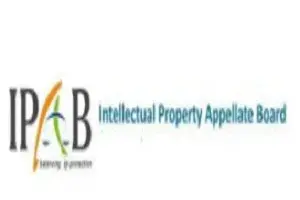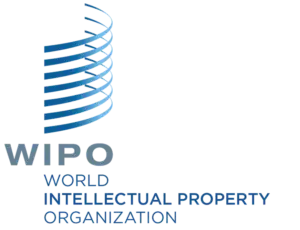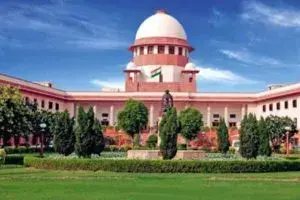IPAB’s notice on fixing royalty for Radio Statutory License.
Myanmar- Starts Trademark Registration from October 1, 2020.
Copyright in Chants and Mantras – Are these Exclusive?
NCLAT allows Exit from CIRP- paves way for Out of Court Settlement.
Justice Manmohan Singh’s tenure extended as IPAB Chairman by Supreme Court.
Ministry launches Ambedkar Social Innovation and Incubation Mission (ASIIM).
IPAB’s notice on fixing royalty for Radio Statutory License.

The Intellectual Property Appellate Board (IPAB) has issued a Public Notice[1] dated September 18, 2020, informing the interested parties about the intention of IPAB to fix royalties for broadcast of sound recordings through radio.
Section 31D of the Copyright Act 1957 enables any broadcasting organisation desirous to communicate literary or musical work and sound recording works to the public by way of broadcast or performance, can obtain a statutory license for such communication by giving a prior notice and paying royalties to the copyright owner at the rate fixed by the IPAB.[2]
The present notice has been issued by the IPAB in view of pending applications filed in this regard by Music Broadcast Ltd. and other radio broadcasters.
IPAB invites suggestions from interested parties
The IPAB has notified that all interested parties can now forward their suggestions, in writing, along with all relevant and adequate evidence for fixing the rate of royalties for broadcast of sound recordings and musical work through radio, within 30 days from the date of publication of Public Notice.
As the Public Notice is not dated therefore all the interested parties including the owners of the copyright, any broadcasting organisation, any radio broadcasters or any other interested person/ entity, can submit their suggestions on or before October 18, 2020 (Wednesday).
Brief Important list of Dates are as under:
| S. No. | Particulars | Date |
| 1 | Publication of Notice (on Website of Copyright Office) | September 22, 2020(Tuesday) |
| 2 | Last Date of Submission of Suggestions by Interested Parties | October 18, 2020(Wednesday) |
Other Important Information for submission of Suggestions to IPAB
| S. No. | Particulars | Date |
| 1 | Email Id to communicate the Suggestions | delhiregistryipab@gmail.com |
| 2 | Contact Number for IPAB | 011-26180613/14 |
| 3 | Website for IPAB | http://www.ipab.gov.in/ |
| 4 | Address of IPAB | G-62 to 67 & 196 to 204, August Kranti Bhawan, Bhikaji Cama Place, New Delhi – 110 066 |
Since no specified mode of communication is given in the Public Notice, therefore interested parties may submit their suggestion via email and/ or physical submission at the address of the IPAB.
IPAB has listed all the pending applications in the above matter for final disposal on 02.11.2020 at 2.30 PM and has accordingly directed that the matter will be taken up on a daily basis untill the arguments are completed.
IPAB has shown its clear intention to settle the issue of fixing royalties for broadcast of sound recordings and musical work through radio latest by November 2020. Therefore, all the interested parties are recommended to submit their submission as soon as possible for consideration of the IPAB.
Also read
[1]Internet Broadcasting Organization and Statutory License under Section 31D of Copyright Act
[1]Is Internet Broadcasting Organization covered under Section 31D of Copyright Act?
Myanmar- Starts Trademark Registration from October 1, 2020.

Trademark Registration in Myanmar under the soft- opening period has commenced from October 01, 2020. The soft opening period is expected to last for a period of six (6) months i.e. till March 31, 2021, thereby allowing existing trademark holders to re-file applications for their marks(s).
Read our previous news alert regarding the commencement of soft opening period in Myanmar here.
The Myanmar IP Office is accepting the following types of new-applications re-filing under the soft opening period:
- Trademark applications based on Declaration of Use registered with Registrar of Deeds before October 01, 2020; or
- Trademark applications for the marks already in use in Myanmar subject to submission of concrete evidence of use (such as class and list of goods/services, tax receipt showing use of the mark, evidence of promotional activities featuring the mark, evidence of actual use of the mark in Myanmar and any other documents showing any use of the mark)
It would be pertinent to mention here that the Power of Attorney/ Form of Authorization and the Official fee under the new law have not been announced yet and are likely to be informed around the Grand Opening Date of April 1, 2021.
Filing of Application under the Soft- opening period
- Filing of applications for re-registration of all the marks by uploading the same on the Government portal/ database. This is only a preliminary step and will not be considered as completion of filing formalities;
- As and when notified by the Ministry, official fees and Form TM2 will have to be submitted.
Please note that all the applications for re-registration of the marks filed during the soft opening period from October 01, 2020 until March 31, 2021 will have the same application date i.e. the grand opening date of April 01, 2021.
Related Posts
Myanmar- Trademark Registration Starting – October 1, 2020
Myanmar: Trademark Filing Opens- Soft Launch- January, 2020
Myanmar: New Trademark and Industrial Design Law have been enacted
Copyright in Chants and Mantras – Are these Exclusive?

By Vikrant Rana and Meril Mathew Joy
As recently as September 2020, few Twitter statuses shared by Swami Vaishampayan was in the limelight when Swamiji’s post about his experience of chanting Ganesh Atharvashirsha was confronted on the ground that the Ganesha Atharvashirsha has been copyrighted by T-series and Royalty Network (an American Company). This whole incident has raised a debatable issue, i.e.“Why should copyrights claims be entertained when it comes to the greatest treasure of Vedic wisdom passed on since centuries through Shrutis and Smritis in Gurukuls all over India?”
Pursuant to the aforesaid outcry, Swamiji raised a Public Grievance vide registration number PMOPG/E/2020/0759421 dated August 20, 2020 with the Prime Minister Office (Government of India), to which a reply dated September 08, 2020 was issued by Copyright Office confirming the following points[1]:
- That as per the records available in the Copyright Office, no work under the title ‘Vedic Chanting Mantras including the sacred Ganesh Atharvashirsha has been registered under the Copyright Act 1957.
- That vedic scriptures and mantras are the part of traditional knowledge in public domain which is not subject matter of Copyright.
In light of the copyright issue raised and clarification provided by the Copyright office (Government of India), it would be appropriate to address some important questions relating to Copyright and understand the extent of Copyright protection available to a work.
- Can Chants and Mantras be Copyrighted?
Chants and Mantras are age old Vedic wisdoms which are used, performed, reproduced by humans for peace and/ or communication/ pray with the Almighty. Since, such chants and mantras are being used since centuries, therefore no copyright can be claimed on the literary content of these chants, mantras or any other shlokas or other content which is being used by mankind since centuries especially such content which has religious/ spiritual value or has been derived from the knowledge vault of a religion.
- Can Performance of the Chants and Mantras be Copyrighted?
Yes, the performance of the chants and mantras can be copyrighted as sound recording or cinematograph film. Where an individual/ entity intends to perform any chants/ mantras/ shlokas or any other religious or spiritual content derived from the religious wisdom, then such performance by the individual/ entity can be protected/ registered as a copyright.
- To what extent such Copyright Protection can be claimed on the Performance of the Chants and Mantras?
Where a performance is performed, recorded and protected/ registered by the individual/ entity, then the Copyright protection can only extend over the use of such performance as performed by the individual/ entity.
The individual/ entity will not be able to restrict any third party from performing the chants and/ or mantras, however, third parties can be restrained from using that specific recording created or performed by the individual/ entity.
In a gist, the right extends to the complete recording as recorded by the individual/ entity, however, such performance does not give right to the individual/ entity to claim exclusive rights over the literary content of the recording/ performance.
Note: Where chants/ mantras are performed in a specific manner which is unique and different from the existing practice, then a claim on such manner of performance can be claimed through the recording so created/ performed by the individual/ entity.
- Can the performer claim exclusive rights on the content of performance?
No. When a performance is recorded, either as a sound recording or cinematograph work, then the copyright on such performance extends only to such recording and not to the elements of the recording. Each element of the recording, if copyrightable, can be protected separately under different categories such as Literary work (the content), Musical work (the music notes used), etc.
Anybody who wishes to perform these chants/ mantras/ shlokas and other works related to religion, cannot be denied the liberty to do the same as these works are derived from the knowledge vault of the religion and have been in use since centuries. Every individual has a universal right to express the chants/ mantras/ shlokas in a manner that helps them achieve their intended purpose (peace, communication with the Almighty etc.) and therefore, each individual will have a right to claim exclusivity over their own manner of performance or recording.
- Is it time to establish an IP regime based on Religion?
Religions prime focus has been the betterment of people and therefore, religion must be kept free for access by all human beings. Therefore, making the religion or any other aspects of religion from its vault of knowledge subject to IP or exclusive to a specific person or entity will be unfair and prima facie against the whole purpose of religion itself. No religion creates monopoly in favour of one individual, rather religion is the only aspect of human life which can and should be accessed and recreated at any point of time for any duration and free of charge.
Intellectual Property Rights is a systematic mechanism of law wherein the original creators of a work, are motivated and encouraged to derive exclusive benefits from their creation. However, if religion and its knowledge vault is made subject to IP regime, then even the most important part/ aspects of mankind, i.e. the reliance on religion by people, will lose its essence.
Understanding Copyright in Recordings
Due to lack of awareness about Copyright protection, it has become difficult for people to enforce their rights and act against any misleading infringement actions. Copyright laws has been created to motivate and encourage the original author/ creator to enjoy the benefits from his creation. Copyright is only available to the owner/ author of the work unless expressly transferred to any other party.
A recording can be a compilation of multiple works (by various interested parties) as mentioned herein below:
| S. No | Category of Work | Particular | Author | Owner |
| 1 | Literary Work | The lyrics/ screenplay/ written content of the recording | Lyricist/ Writer | Usually, the owner of the recording is the producer of the recording, subject to agreement between the producer and author(s) (Section 17 of the Copyright Act 1957) |
| 2 | Musical Work | The graphical notes of the music | Musician | |
| 3 | Sound Recording | Audio compilation | Multiple authors such as Lyricist/ Writer, Musician, Singer, composer, musical director, director of recording etc. | |
| 4 | Cinematograph Film | Visual Compilation |
When we talk about copyright protection over a recording, then the protection extends to the recording as a whole and not to each and every work encompassed in the recording (as mentioned above). Where an individual/ entity creates/ records a performance of chants, then the recording of chants/ mantras is the copyrighted work of such entity/ individual, however the rights over the individual elements can be claimed subject to the agreement between the individual/ entity and the author/ owner of each work encompassed in the recording as identified above.
Section 14 of the Copyright Act 1957 provides for exclusive rights vested with the owner of the copyright. For Sound Recording/ Cinematograph Films, the following exclusive rights are granted:
(d) in the case of a cinematograph film,—
(i) to make a copy of the film, including—
(A) a photograph of any image forming part thereof; or
(B) storing of it in any medium by electronic or other means;
(ii) to sell or give on commercial rental or offer for sale or for such rental, any copy of the film;
(iii) to communicate the film to the public;
(e) in the case of a sound recording,—
(i) to make any other sound recording embodying it including storing of it in any medium by electronic or other means;
(ii) to sell or give on commercial rental or offer for sale or for such rental, any copy of the sound recording;
(iii) to communicate the sound recording to the public.
The mere perusal of provisions relating to exclusive rights clearly indicates that the exclusive rights mention about exploiting the recording as a whole but not other works encompassed in the recording. This supports the argument that the exploitation of a recording can be done as a whole only and no right can be claimed on individual works encompassed in it, unless express rights are obtained for individual work from the author/ owner of such work
The Conclusion
With the clarification issued by the Copyright Office, it is now established that the chants, mantras and other vedic scriptures, are the part of traditional knowledge in public domain which is not subject matter of Copyright.
Further, the performance of the Chants and Mantras by an individual/ entity can be protected as copyright however, use of performance for religious ceremony or for benefit of religious institution is exempted as an act not constituting infringement[1]. The religious ceremony as explained includes marriage procession and other social festivities associated with a marriage.[2] Similarly, where an activity is done for the benefit of religious institution is also exempted from infringement.[3] With these exceptions in place, it can be argued that the performance of any recording done for religious purpose and for non-commercial exploitation will be covered as an activity exempted from any infringement.
However, a copyright will vest with the individual/ entity which created a recording bearing performance of the chants/ mantras to exclusively use that particular recording created by them and an unauthorised use of such recording by a third party can infringe upon the rights of such individual/ entity.
[1] https://twitter.com/swamianandv/status/1306083701856624641/photo/1
[3] Section 52(1)(za), the Copyright Act 1957.
Related Posts
India: Recorded Music Performance Limited applies for registration as a Copyright Society
Internet Broadcasting Organization and Statutory License under Section 31D of Copyright Act
NCLAT allows Exit from CIRP- paves way for Out of Court Settlement.

By Vikrana Rana and Anuj Jhawar
In a recent case, the National Company Law Appellate Tribunal (“NCLAT”) permitted exit or withdrawal from Corporate Insolvency Resolution Process (“CIRP”) after Interim Resolution Professional (“IRP”) was appointed and moratorium was imposed in the case. The said order by NCLAT acted as a relief to corporate debtors, as it has paved way for out of Court settlement between the disputed parties. The said order was passed by NCLAT in the case of Vivek Bansal vs Burda Druck India Pvt. Ltd. & Anr.[1]wherein, Vivek Bansal, Dynamic Textbooks Printers Ltd is the Petitioner (“Corporate Debtor”) and Burda Druck India Pvt. Ltd, the Respondent (“Operational Creditor”).
It would be relevant to mention herein that the initiation of CIRP has been temporarily suspended in the wake of COVID-19 pandemic via IBC Ordinance 2020. Thus, the present ruling can also prove to be beneficial for those entities already facing CIRP as they can now resort to out of Court settlements.
Brief facts of the case
In the present case, the Respondent or Operational Creditor, in order to recover the monetary claims, filed an application for initiation and commencement of CIRP under Section 9 of Insolvency and Bankruptcy Code, 2016 (“Code”)[2] against the Corporate Debtor. The said application for initiation of CIRP was admitted and accepted by National Company Law Tribunal, Delhi Bench five (“NCLT”) leading to appointment of IRP under Section 16 of the Code and thereby, imposition of moratorium under Section 14.
As per Section 21 of the Code, Committee of Creditors (“COC”) shall be constituted within 30 days from the appointment of IRP. In this case, order for appointment of IRP and moratorium imposition was passed on May 27, 2020. Conforming to the NCLT’s order, IRP was appointed and moratorium imposed. However, before the constitution of Committee of Creditors, the parties to dispute ended up settling the issue cordially, whereby, both Operational Creditor and Corporate Debtor agreed to settle at Rs. 4,25,00,000/- as final amount of claims. Consequently, the parties to dispute formed and entered upon a settlement agreement on July 7, 2020, failing which, the Operational Creditor shall have the right to revive and initiate CIRP.
NCLAT allows Exit from CIRP
Subsequent to the settlement agreement, the Corporate debtor furnished an appeal to NCLAT[3], under Rule 11 of NCLAT Rules, 2016[4] with respect to quashing of order passed on May 27, 2020. Relying on the case of Swiss Ribbons Pvt. Ltd. vs. Union Of India on 25 January 2019[5], NCLAT set aside the order passed by NCLT on May 27, 2020 releasing the corporate debtor and thereby, the company, from the holds of law and CIRP proceedings.
The Court not only permitted withdrawal from insolvency proceedings but also disposed of the case with respect to terms and conditions of settlement agreement. The adjudicating body ordered removal of IRP, revival of Board of Directors and the company itself. The NCLAT, nevertheless, also ruled that, if Corporate debtor failed to adhere to the terms and conditions of settlement agreement, the concerned operational creditor shall have the right to approach NCLT, New Delhi (Bench five) for revival of CIRP proceedings.
Conclusion
The concerned verdict opens up a window for Corporate Debtor to depart from CIRP proceedings and opt for out of Court settlement. Considering the suspension of initiation of CIRP as per IBC Ordinance 2020 and economic crisis due to COVID-19 pandemic, the ruling comes as a relief in these distressed times for corporations as now the parties to the dispute can settle on their own terms with better value of claim and within less span of time. In addition to this, it would also permit corporate debtors to retain their company.
[1] Company Appeal (AT) (Insolvency) No. 552 of 2020
[2] https://www.mca.gov.in/Ministry/pdf/TheInsolvencyandBankruptcyofIndia.pdf
[4] https://nclat.nic.in/Useradmin/upload/4699011755ae16a9902907.pdf
Related Posts
IBC THRESHOLD-WHETHER PROSPECTIVE IN NATURE?
Unpaid Installments under Settlement Agreement Not Operational Debt under IBC
India: Threshold Limit under IBC Enhanced to INR 1 Crore amidst Coronavirus Crisis
Justice Manmohan Singh’s tenure extended as IPAB Chairman by Supreme Court.

The Hon’ble Supreme Court vide its order dated September 16, 2020 in the case of In RE: Appointment Of Judicial Members In The Armed Forces Tribunal v. Ministry of Defence & Anr.[1], has once again extended the tenure of Justice Manmohan Singh, as Chairperson of the Intellectual Property Appellate Board (‘IPAB’) for a period of three months from the date of the order. The present order was passed by the Hon’ble Court while hearing a batch of petitions challenging the constitutional validity of the Tribunal, Appellate Tribunal and other Authorities (Qualifications, Experience and other Conditions of Service of Members) Rules, 2020, wherein the Petitioners contended that in view of Rules of 2020, Justice Singh was entitled to continue as IPAB Chairman till January 01, 2020.
It would be pertinent to note here that this is the second time that the Supreme Court has extended the term of Justice Manmohan Singh as Chairman of the IPAB. In December, 2019 the Hon’ble Court had extended the term of Justice Singh for a period of one year while hearing a batch of petitions filed by the International Association for Protection of Intellectual Property, in view of the fact that the post of IPAB Chairman had been lying vacant since September 21, 2019.
The Timelines
- Justice Singh had been appointed as the Chairman of IPAB in July, 2017 for a period of three years. However, it was later notified that as Justice Singh would be attaining the age of superannuation (65 years) in September, 2019 his term as IPAB Chairman would come to an end in September, 2019.
- The International Association for Protection of Intellectual Property in their petition before the Hon’ble Court contended that if Justice Singh retired from the post then the position of IPAB, Chairman would become vacant and in turn would cause a lot of hardships to litigants. Considering the Association’s plea, the Supreme Court in December last year further extended the term of Justice Singh for a period of one year from the date of his superannuation i.e. till September 21, 2020.
- Thereafter, in March 2020, the Central Government also notified that Justice Manmohan Singh would continue to serve as IPAB’s Chairman up to September 21, 2020, or until further orders, whichever is earlier.
- And now on September 16, 2020, the Apex Court has further extended his term for a period of three months from the date of the order.
Justice Manmohan Singh is considered a legend for his remarkable judgments in various field of Intellectual Property Law. Thus, the second extension of the tenure of Justice Singh as a Chairman of IPAB comes as a sigh of relief for litigants whose matters are pending with the IPAB.
[1] Writ Petition(s)(Civil) No(s).857/2016
Ministry launches Ambedkar Social Innovation and Incubation Mission (ASIIM)

Shri Thaawarchand Gehlote, Hon’ble Union Minister for Social Justice and Empowerment launched the “Ambedkar Social Innovation and Incubation Mission (ASIIM) under Venture Capital Fund for SCs” through Video Conferencing on September 30, 2020 with a view to promoting innovation and enterprise among SC students studying in higher educational institutions.[1] The ASIIM initiative will be implemented by the Venture Capital Fund for Scheduled Castes (VCF-SCs) which was set up in 2016 with the Fund size of INR 500 Crore.
ASIIM- Objectives
The main objectives of the ASIIM initiative are[2]:
- To promote entrepreneurship among the SC Youth with special preference to Divyangs.
- To support (1,000) innovative ideas till 2024 through a synergetic work with the Technology Business Incubators (TBIs) set up by Department of Science and Technology.
- To support, promote, handhold the start-up ideas till they reach commercial stage by providing liberal equity support.
- To incentivize students with innovative mindset to take to entrepreneurship with confidence.
As reported by Press Trust of India, under this fund, 117 companies promoted by SC entrepreneurs have been sanctioned financial assistance to set up business ventures. Additionally, 1,000 SC youth would be identified in the next 4 years with start-up ideas through the Technology Business Incubators (TBIs) in various higher educational institutions. They will then be funded INR 30 Lakhs in 3 years as equity funding so that they can translate their start-up ideas into commercial ventures. Successful ventures would further qualify for venture funding of up to INR 5 Crore from the Venture Capital Fund for SCs.
The minister said that this initiative under VCF-SC will promote innovation in the SC youth and would help them to become job-givers from job-seekers; and would further give fillip to the ‘Stand Up India’ initiative.
[1] https://pib.gov.in/PressReleasePage.aspx?PRID=1660364
[2] https://static.pib.gov.in/WriteReadData/userfiles/English%20Brief%20on%20ASIIM.pdf
Related Posts
Global Innovation Index 2020: India ranked at 48 among 131 countries
National Education Policy, 2020 aims at Fostering Innovation and Creativity
WIPO figures indicate need of green tech innovation surge to flight climate change


